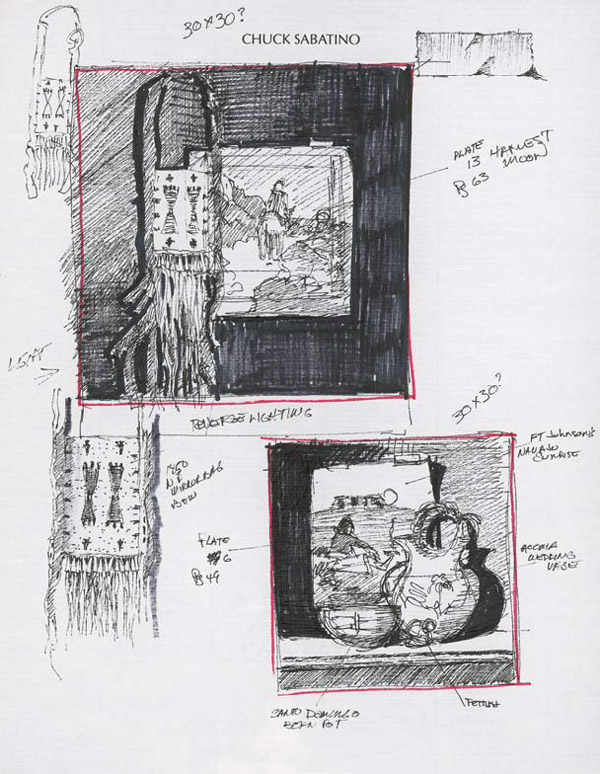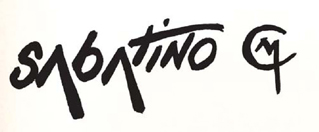
A collector of historic and prehistoric Southwest Pueblo pottery, Sabatino often arranges his pieces alongside Native American artifacts and rendered Edward S. Curtis photos for his oil paintings. After attending the Cartoonists and Illustrator School in New York (now the School of Visual Arts), he spent the next twenty-five years building an award-winning career creating ads for such companies as Johnson & Johnson and Procter & Gamble. Upon retiring in 1988, the longtime New Yorker moved to Scottsdale, Arizona, and now spends his days painting. He has been featured in SOUTHWEST ART, WESTERN ART COLLECTOR and ART OF THE WEST magazines.

Drawing is a way to learn more about the subjects you're working on. I do preliminary drawings for composition, space, value and lighting.
When I do find a unique artifact for a new painting, I start to do preliminary drawings of it with other artifacts to find the right composition, evaluating the use of negative space, value and lighting. Some of the things I think about when sketching are how objects relate to each other, color, texture, and getting a pleasing flow to the composition. At this point it's easy to move things around.




In my finished sketch there is enough information as to the size of the subjects, lighting, shading and notes written that it could be possible for someone without any knowledge of the original subjects to paint the painting.
I usually sketch at night, after I've painted all day. It's a way of relaxing and being loose with ideas for other paintings. For sketching, I use a Sanford uni-ball fine point pen; for other sketches I use compressed and willow charcoal and Sharpies. I sketch on old letterhead paper.
Beginning a sketch starts the creative juices flowing — not knowing where it's leading, but knowing that at the end I will have something to be proud of.
When sketching ideas for a painting, I don't have to be as precise and detailed as in the finished art. It's merely a vehicle for information. Most of the drawings for my paintings are very accurate, however, to the finished art; composition, lighting, negative space, value and tone are worked out beforehand. It almost looks like the sketch was made from the painting.
In my finished sketch there is enough information as to the size of the subjects, lighting, shading and notes written that it could be possible for someone without any knowledge of the original subjects to paint the painting.
